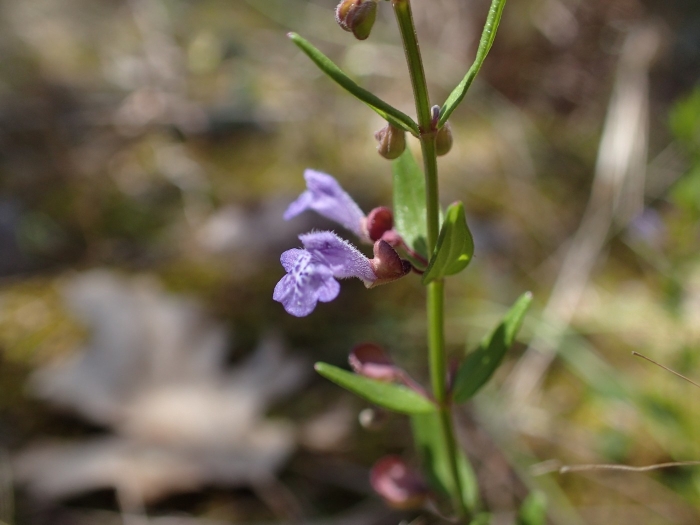Small Skullcap
(Scutellaria parvula)
Small Skullcap (Scutellaria parvula)
/
/

Evan M. Raskin
CC BY 4.0
Image By:
Evan M. Raskin
Recorded By:
Copyright:
CC BY 4.0
Copyright Notice:
Photo by: Evan M. Raskin | License Type: CC BY 4.0 | License URL: http://creativecommons.org/licenses/by/4.0/ | Rights Holder: Evan M. Raskin | Publisher: iNaturalist | Date Created: 2017-05-03T12:54:05-07:00 |

























Estimated Native Range
Summary
Scutellaria parvula, commonly known as Small Skullcap, is a perennial herb native to a variety of habitats in eastern and central North America, including prairies, glades, savannas, and open woodlands. It is more common in the central states and can be rare in the eastern regions. Small Skullcap typically grows to a height of 4-16 inches (10-40 cm) and spreads 6-12 inches (15-30 cm). It has a clumping form with delicate blue to lavender flowers that bloom from late spring to early summer, offering a modest yet appealing display. The plant is recognized by its small, tubular flowers and ridged, toothed leaves.
Small Skullcap is valued for its drought tolerance and its ability to thrive in full sun to part shade conditions. It is often used in native plant gardens, rock gardens, and as a ground cover due to its low stature and spreading habit. It prefers well-drained soils, especially those that are calcareous, and requires minimal maintenance once established. While not commonly afflicted by diseases, it can occasionally suffer from root rot in poorly drained soils. Small Skullcap is also appreciated for its historical medicinal uses, although it is not commonly used in modern herbalism.CC BY-SA 4.0
Small Skullcap is valued for its drought tolerance and its ability to thrive in full sun to part shade conditions. It is often used in native plant gardens, rock gardens, and as a ground cover due to its low stature and spreading habit. It prefers well-drained soils, especially those that are calcareous, and requires minimal maintenance once established. While not commonly afflicted by diseases, it can occasionally suffer from root rot in poorly drained soils. Small Skullcap is also appreciated for its historical medicinal uses, although it is not commonly used in modern herbalism.CC BY-SA 4.0
Plant Description
- Plant Type: Herb
- Height: 0.5-0.75 feet
- Width: 0.25-0.5 feet
- Growth Rate: Moderate
- Flower Color: Blue, Purple
- Flowering Season: Spring, Summer
- Leaf Retention: Deciduous
Growth Requirements
- Sun: Full Sun, Part Shade
- Water: Medium
- Drainage: Medium
Common Uses
Bee Garden, Butterfly Garden, Low Maintenance
Natural Habitat
Prairies, glades, savannas, and open woodlands
Other Names
Common Names: Small Skullcap, Dwarf Skullcap, Little Skullcap
Scientific Names: , Scutellaria parvula, Cassida parvula,
GBIF Accepted Name: